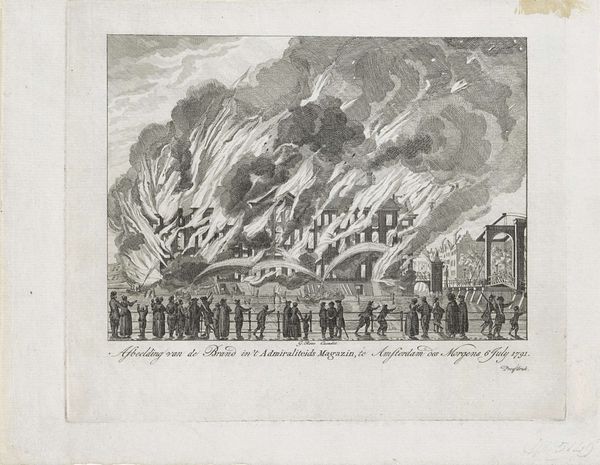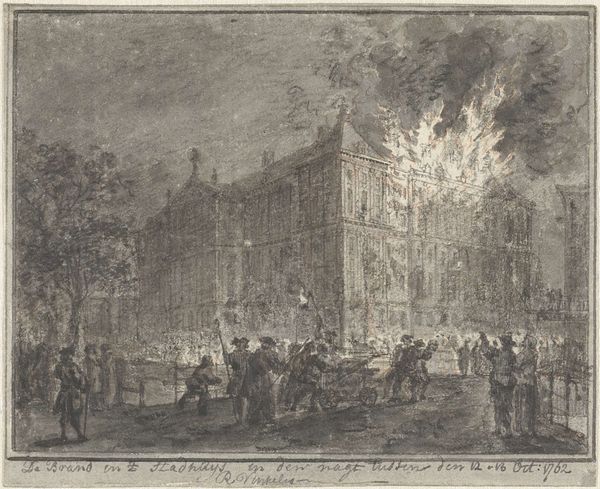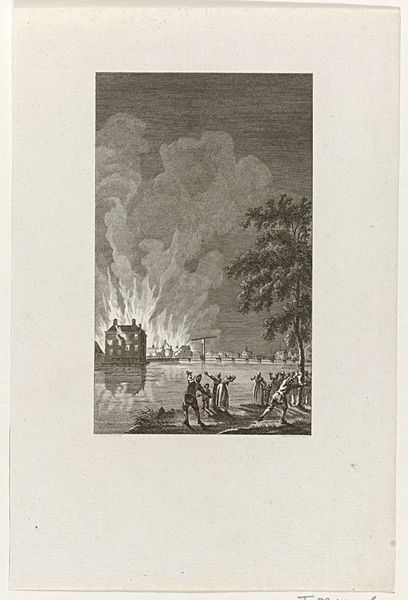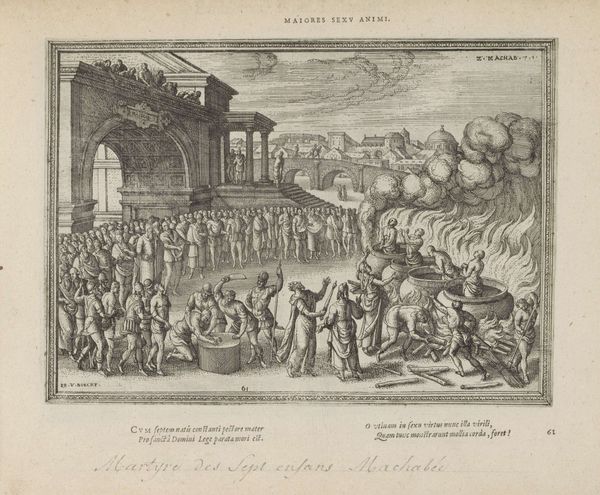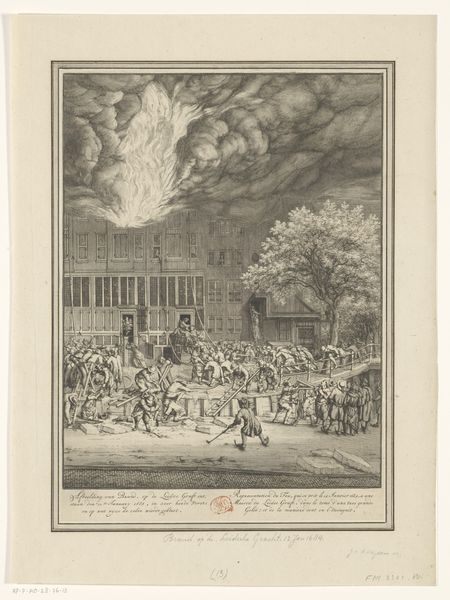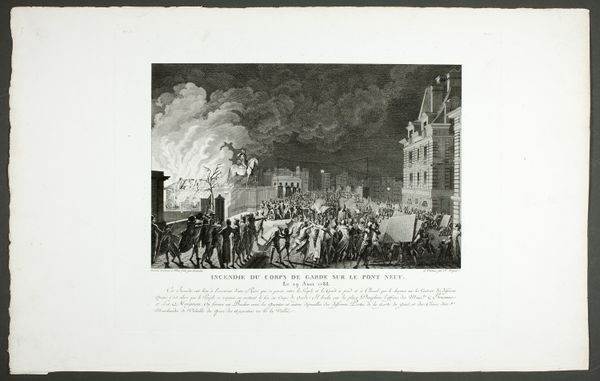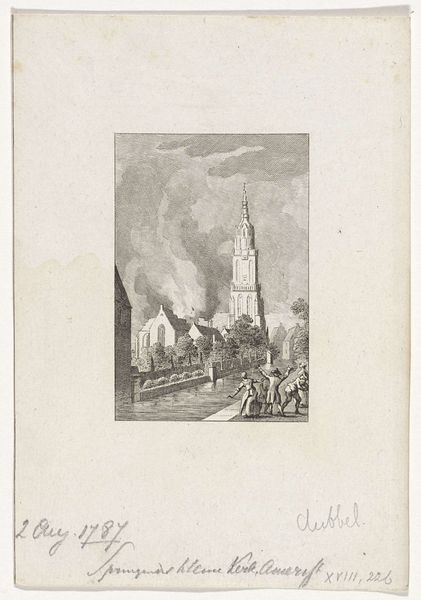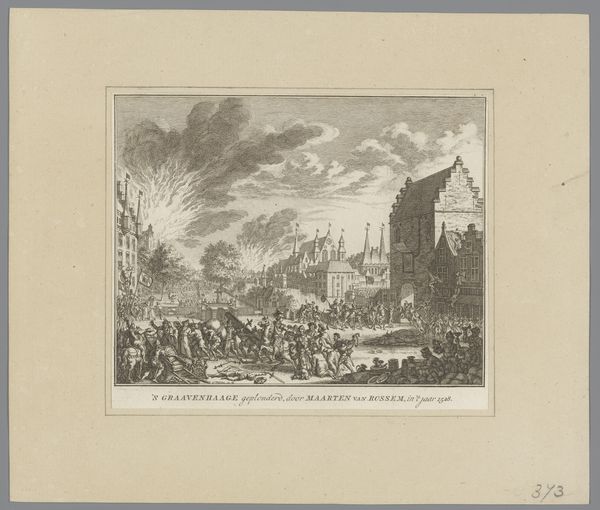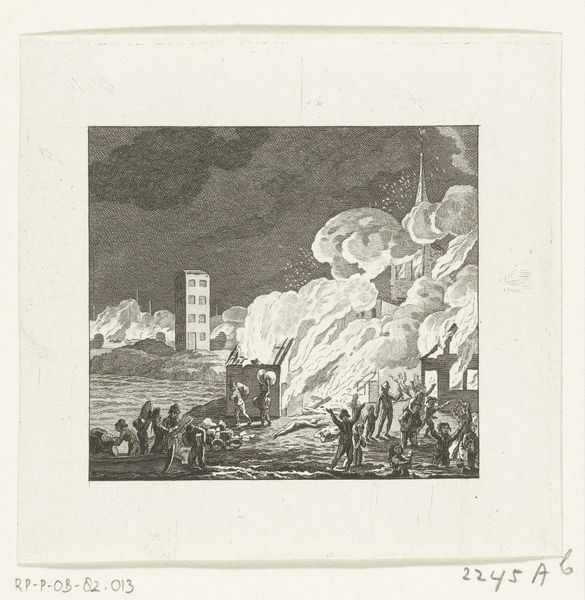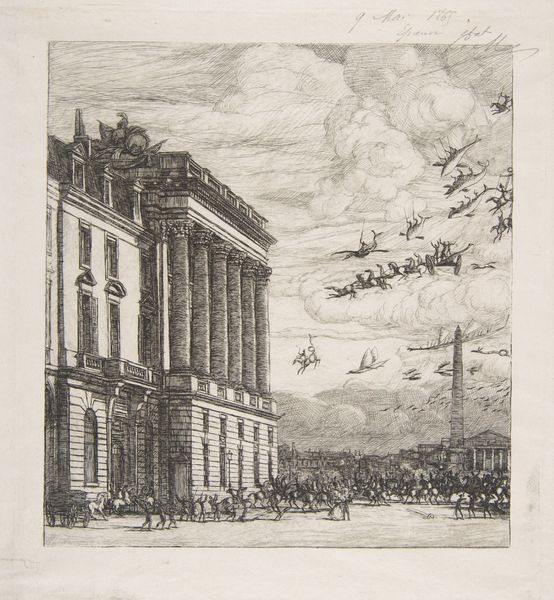
print, engraving
#
baroque
# print
#
old engraving style
#
cityscape
#
history-painting
#
engraving
Dimensions: height 181 mm, width 235 mm
Copyright: Rijks Museum: Open Domain
Editor: So, here we have "Brand in de Kapelkerk te Alkmaar, 1760" by Simon Fokke, a rather dramatic scene rendered in engraving. I'm immediately struck by the contrast between the meticulous detail of the architecture and the chaotic depiction of the fire and the gathering crowd. What draws your attention in this print? Curator: Well, the burning Kapelkerk is indeed quite captivating. But let's consider Fokke's means of production: an engraving made for mass consumption. Note the layers of labor – from the paper-making, to the engraver, the printing press operators, to those distributing the prints. All contributing to a consumable product depicting disaster. The fire itself, too, consumed matter to create a spectacle, immortalized for sale in printed form. Do you think the print romanticizes this historical event? Editor: I suppose so! I mean, there is a degree of… artistic license… maybe. It is definitely a commercial enterprise though. It's interesting how this medium—the print—sort of transforms a singular, destructive event into something reproducible, and therefore almost ordinary. Like a news report almost. Curator: Exactly. Fokke used very common materials and basic methods, a sharp contrast with our assumptions about the "high art" practices and cultural capital. We can look at how he utilized line and tone within a rigorous process, for production across a wide consumer base. To whom do you think these images were marketed? Editor: Well, probably people interested in local events, perhaps even people who were there! Middle-class folks buying it to remember, discuss... and, in a morbid way, own a piece of the spectacle? Curator: Precisely. Think, too, about how each stage of production depended on materials and the bodies performing the labour. Also the means by which it was sold - how it changed hands, how the subject has entered into the art canon... the implications are considerable. Editor: That really puts the image in a new light, shifting the focus from just the depiction of the fire to the social and economic networks surrounding its creation and consumption. I never really considered this as a commodified disaster. Curator: Focusing on materiality really shows us the labour, systems, and exchanges underpinning something that, at first glance, might seem purely aesthetic or historical.
Comments
No comments
Be the first to comment and join the conversation on the ultimate creative platform.

